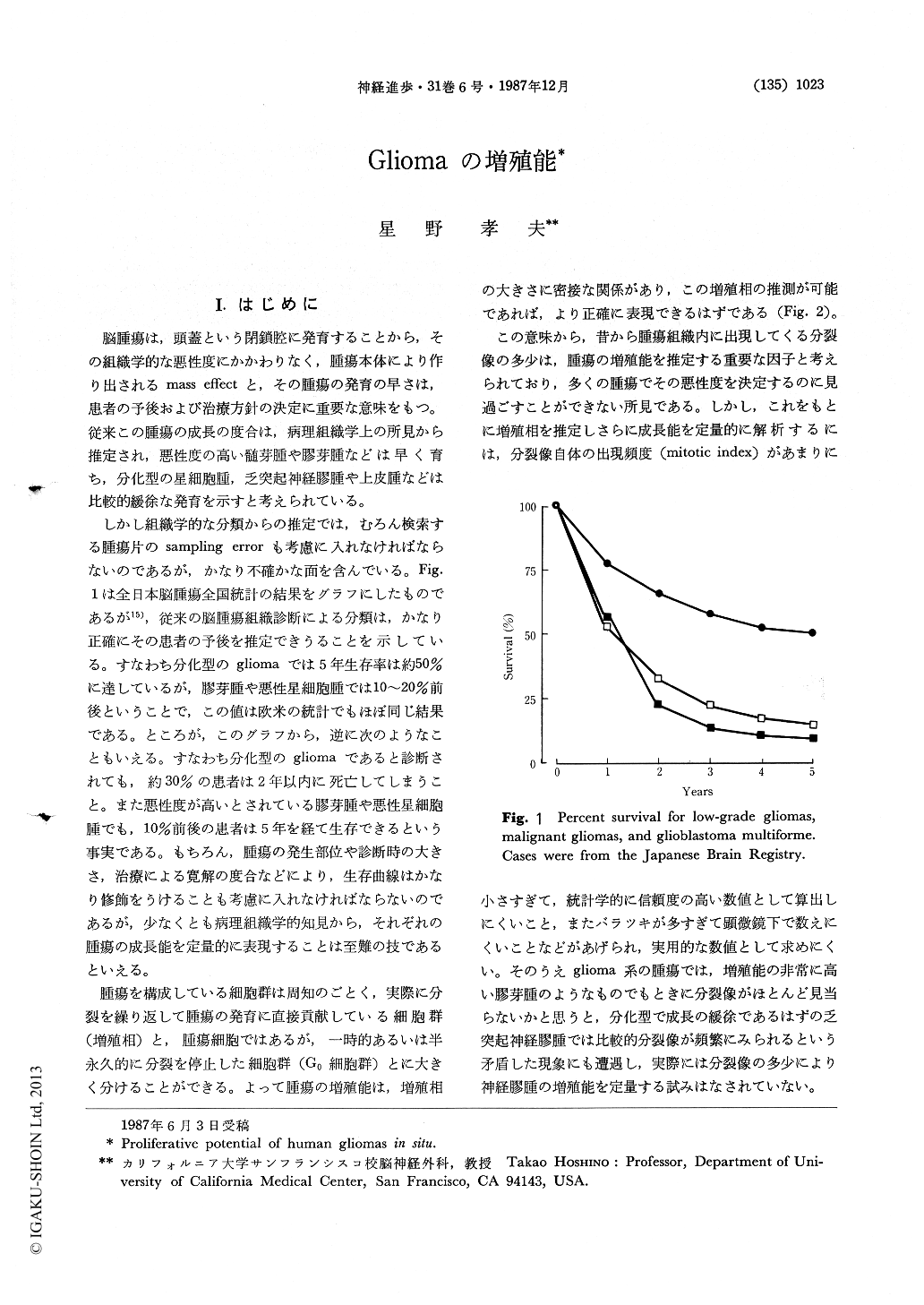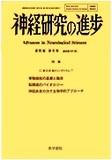Japanese
English
- 有料閲覧
- Abstract 文献概要
- 1ページ目 Look Inside
I.はじめに
脳腫瘍は,頭蓋という閉鎖腔に発育することから,その組織学的な悪性度にかかわりなく,腫瘍本体により作り出されるmass effectと,その腫瘍の発育の早さは,患者の予後および治療方針の決定に重要な意味をもっ。従来この腫瘍の成長の度合は,病理組織学上の所見から推定され,悪性度の高い髄芽腫や膠芽腫などは早く育ち,分化型の星細胞腫,乏突起神経膠腫や上皮腫などは比較的緩徐な発育を示すと考えられている。
しかし組織学的な分類からの推定では,むろん検索する腫瘍片のsampling errorも考慮に入れなければならないのであるが,かなり不確かな面を含んでいる。Fig.1は全日本脳腫瘍全国統計の結果をグラフにしたものであるが15),従来の脳腫瘍組織診断による分類は,かなり正確にその患者の予後を推定できうることを示している。すなわち分化型のgliomaでは5年生存率は約50%に達しているが,膠芽腫や悪性星細胞腫では10〜20%前後ということで,この値は欧米の統計でもほぼ同じ結果である。ところが,このグラフから,逆に次のようなこともいえる。すなわち分化型のgliomaであると診断されても,約30%の患者は2年以内に死亡してしまうこと。また悪性度が高いとされている膠芽腫や悪性星細胞腫でも,10%前後の患者は5年を経て生存できるという事実である。もちろん,腫瘍の発生部位や診断時の大きさ,治療による寛解の度合などにより,生存曲線はかなり修飾をうけることも考慮に入れなければならないのであるが,少なくとも病理組織学的知見から,それぞれの腫瘍の成長能を定量的に表現することは至難の技であるといえる。
In order to better understand the prognosis ofindividual patients and to design more effective treatments for their tumors, we need more qu-antitative analysis of the proliferative activity and phenotypic variability of each brain tumor in various states of differentiation. So far, 357 pa-tients with various brain tumors have been studied, either by autoradiography using a pulse of 3H-thymidine, or by means of immunohisto-chemistry with an IV infusion of bromodeoxy-uridine (BUdR), a thymidine analogue, at the surgery, to measure percent of tumor cells in DNA synthesis (labeling index: LI), as the pro-portion of labeled cells by these compounds indicates the proportion of cells actually in pro-liferation cycles. The labeling patterns either with 3H-thymidine or BUdR and Lis observed in biopsied materials were similar. However, auto-radiography poses a potential radiation hazard, both to normal tissues and to the environment. In addition, the results are not available for several months. The immunocytochemical method using BUdR requires only several hours to complete, and the results are available within a week after biopsy. BUdR is not radioactive and the doses of BUdR used for this study (200 mg/ m2) are virtually non-toxic, thus a wider variety of human tumors have been investigated. Average LIs were very high in medulloblastomas (range: 6~21%) and glioblastoma multiformes (range: 5~26%), and variable in highly anaplastic astro-cytomas (2~21%). Although most moderately anaplastic astrocytomas (63% of cases) had LIs of less than 1 %, some appeared to have the same proliferative potential as highly anaplastic astrocytomas or glioblastomas, reflected by the high LIs. It is recognized that histologically similar tumors may have different proliferative potentials and need special attentions in predicting prognosis as well as selecting treatment modalities.

Copyright © 1987, Igaku-Shoin Ltd. All rights reserved.


